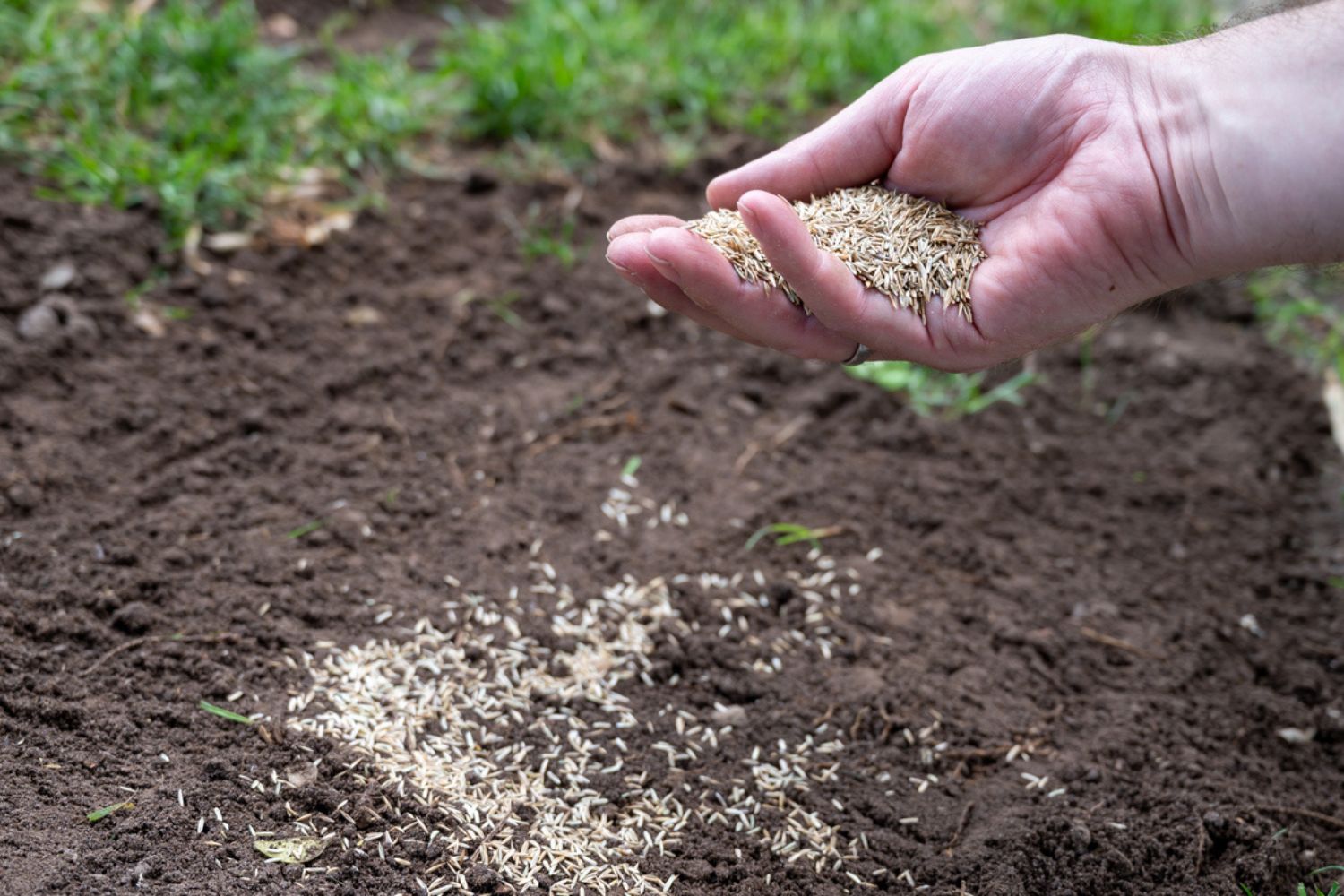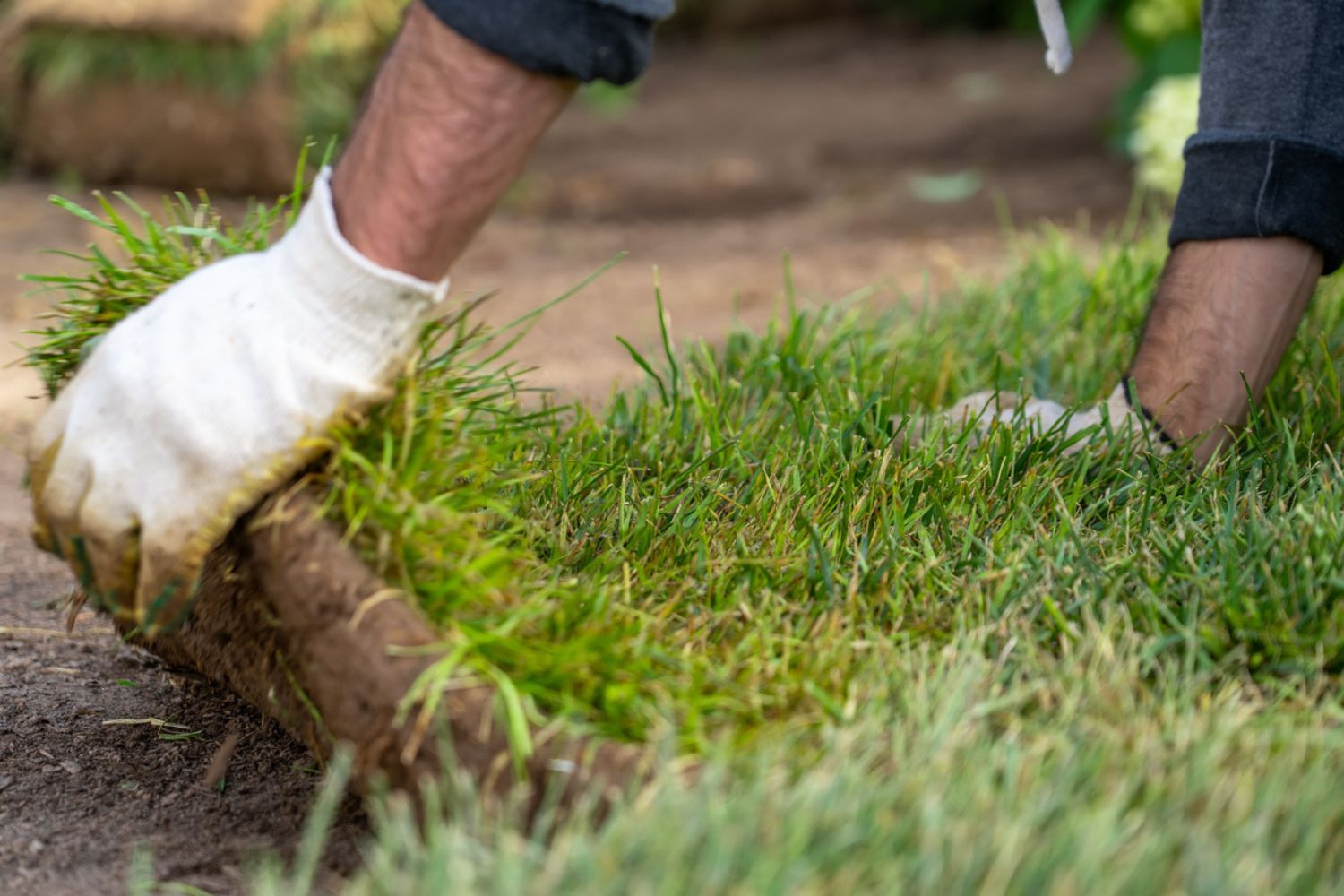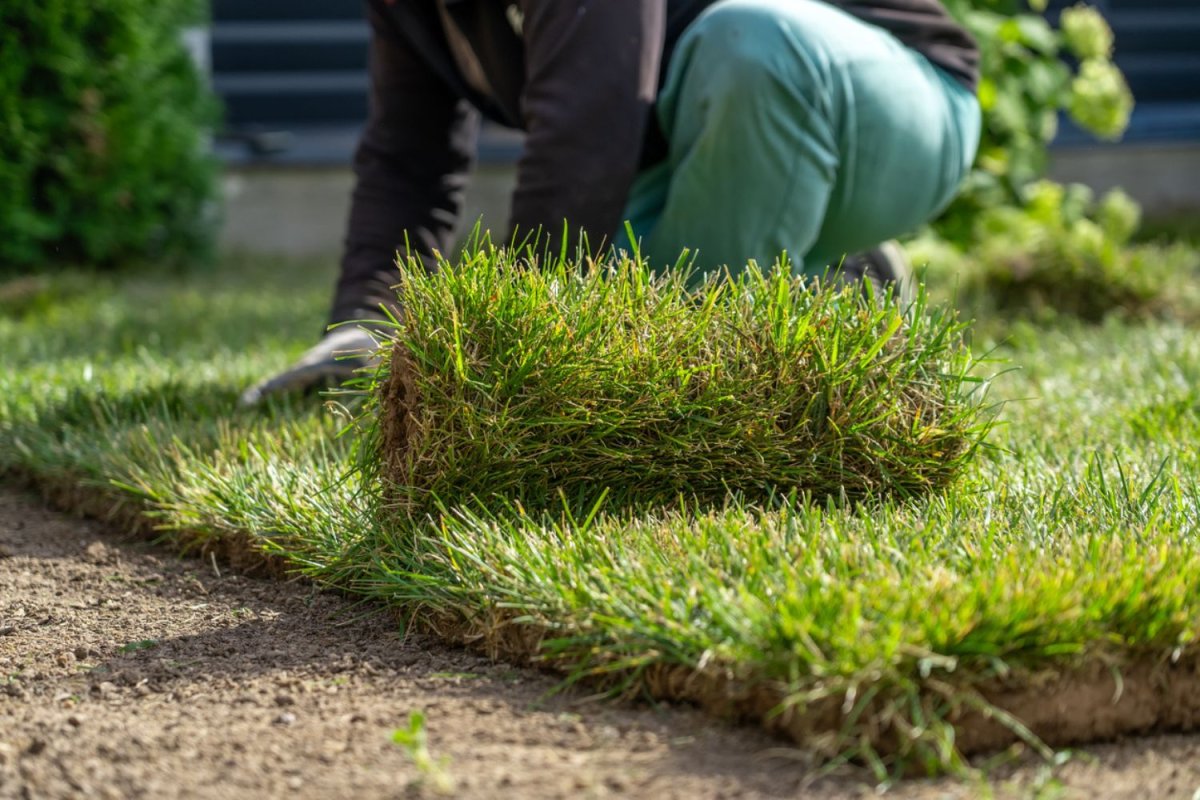We may earn revenue from the products available on this page and participate in affiliate programs. Learn More ›
When creating a lush and green lawn, one of the first choices a homeowner will need to make is whether to use sod or seed. Both options have their own advantages and drawbacks, which can make it confusing to homeowners when choosing the best option for their budget and needs.
The cost of sod vs. seed is an important consideration when it comes to budgeting for a new lawn. While sod provides an instant green lawn, it comes with a higher up-front cost than grass seed. The cost of sod per square foot can vary depending on the type of sod and the size of the area. Sodding grass usually involves professional installation, which can also add to the overall expense.
Seeding a lawn has a lower initial cost, since grass seed is less expensive than sod. While grass seed may take longer to establish and require more maintenance at the beginning, it can result in a thick and healthy lawn over time. Factors such as climate, soil conditions, and the overall desired look of the lawn also play a role in helping homeowners decide between seeding vs. sodding. Weighing the cost of sod vs. seed, along with installation, maintenance, and how long it will take for the seeds to grow, can help homeowners discover the best approach for their lawn care project and the cost of a new lawn.
1. Sod has a higher up-front cost than seed.
Sodding, which involves laying down pre-grown grass onto the soil, does come with a higher up-front cost compared with the cost of seeding a lawn. Sod prices are higher because sod requires more labor and resources to produce and install than seed. Sod farms invest a lot of time and resources into growing healthy and mature grass, which is then carefully rolled and transported to the installation location. The labor-intensive process for one of the best lawn care services (such as TruGreen or Lawn Love) to properly lay the sod also adds to the overall cost. Cost of sod installation ranges from $1,100 to $3,000, or $1 to $2 per square foot, depending on the soil condition and size of the yard.
On the other hand, seeding is more affordable up front. Grass seed is readily available and can be purchased at a much lower cost per square foot compared with the cost of different types of sod. It’s important to note that grass planting involves additional costs such as soil preparation, fertilizers, and watering to make sure the seeds germinate and grow. The cost to seed a lawn runs from $450 to $1,800, or $0.10 to $0.20 per square foot, depending on the size of the lawn and the type of grass. There is more variety in the grass species available for seeding a lawn, so homeowners can choose the best type for their soil and climate.
While sod landscaping may be more expensive, it offers some advantages. Grass sod installation provides an instant lawn, and it often results in a denser and more uniform-looking lawn. It also requires less time and effort relative to seeding, since it can take up to 2 years for a seeded lawn to mature.
2. Seed has a more affordable initial price but requires more upkeep to grow.
Grass seed is a more budget-friendly option initially, since it costs less per square foot compared with sod. This makes it an attractive option for many homeowners who want a new lawn without breaking the bank. It’s important to recognize that while the up-front price of grass seed may be lower, it requires more ongoing maintenance and care to grow into a healthy lawn.
Unlike sod, which provides an instant green lawn, grass seed needs time to germinate, establish roots, and grow into mature grass. During this time, the seed needs to be watered, fertilized, and weeded. While seeding a lawn may demand more time and patience, it can offer long-term benefits such as greater variety in grass species and better adaptability to various weather conditions.

3. The exact cost of sod and seed will depend on the grass variety chosen.
Different grass species vary in price because of availability, popularity, and maintenance requirements. For sodding projects, the cost per square foot can fluctuate depending on the specific type of sod, whether it’s a warm-season grass like Bermuda or a cool-season variety like Kentucky bluegrass. The cost of grass seed can also vary depending on the species and the quality of the seed.
High-end grass, such as premium blends designed purely for aesthetics or specialized types for specific climates, will come with a higher price tag for both sod and seed. More common or standard grass varieties tend to be more affordable. Homeowners will want to research and compare different grass options to find out which one works the best for their budget and lawn needs. For homeowners with a heat-stressed lawn, there are various species of grass that can flourish in sunnier and warmer conditions.
4. Despite its higher cost, sod may be the only option if the installation area is prone to erosion.
Erosion is a common issue that homeowners face, especially those who live in hilly or sloped areas. It can lead to topsoil loss and unstable soil. Sod provides an instant solution to erosion problems. The dense network of roots acts as a natural barrier to keep the soil in place and prevent it from being carried away by water or wind. Immediately after installation on top of a biodegradable mat that’s secured to the soil, sod can withstand erosion and provide an attractive, green lawn.
Hydroseeding is a method of seeding a lawn using a mixture of seed, mulch, fertilizer, and water. The mixture is sprayed on the soil for a uniform application of the seed, and the mulch in the mixture protects the seeds from erosion. This seeding method can be used in areas that experience erosion since it can stabilize the soil and prevent erosion by forming a protective layer over the soil that reduces runoff. The cost of hydroseeding can be worth it for homeowners who have a large area to seed on hilly locations.
Sod can also establish itself in various weather and soil conditions. Seeded lawns may struggle to grow in areas prone to erosion, but sod is likely to thrive. This is why sod grass installation is a popular option for many homeowners who live in areas with heavy rainfall or strong winds.

5. Seed may need to be applied more than once at an additional expense as it can be washed or blown away.
One of the potential drawbacks of seeding a lawn is the possibility of seed loss because of erosion, heavy rainfall, or wind. In areas with poor soil stability or sloping terrain, grass seed can be washed or blown away before it has a chance to germinate and grow. As a result, homeowners may need to apply seed multiple times to make sure they get enough seed coverage. Repeatedly applying the best grass seed for overseeding can increase the overall cost to seed a lawn, since each application means buying more seed and investing in ways to prevent seed loss.
6. In addition to costing more to purchase, sod has a higher installation cost than seed.
The cost difference between sod and seed doesn’t end with the purchase price. Sod installation also comes with higher labor costs. Installing sod requires properly preparing the ground by removing any existing grass, plants, rocks, fallen leaves, or tree stumps, and making sure the soil is graded before placing down the sod rolls. If a homeowner hires a professional to seed a lawn, the soil prep is usually included with the overall seeding cost, but if the soil needs additional attention, it can cost an additional $2 per square foot. Soil prep for sod installation can range from $0.40 to $0.60 per square foot. For homeowners in drought-prone areas with sandy soil, the best grass for sandy soil can help grow an attractive, hardy lawn.
Sodding can also require the use of specialized equipment such as sod cutters and rollers, which can add to the installation cost. This process can be time-consuming and labor-intensive, which can lead to higher installation fees. While the up-front investment in sodding may be higher, professional installation can result in a nearly instant lawn, and a more uniform-looking one as well.
7. Although opting for seed is more cost-effective in the short term, opting for sod is the lower-maintenance choice.
While seeding a lawn may be more cost-effective initially, choosing sod offers the benefit of lower maintenance in the long run. Sod provides an instant lawn, eliminating the need to wait for grass seed to grow. Sod needs to be watered every day for about the first 2 weeks, and the first cutting is typically scheduled after 45 days. The lawn mower should be set to 3 inches to prevent the grass from burning.
Seeding a lawn requires patience and ongoing maintenance to make sure the seeds germinate and establish roots. Homeowners need to water, fertilize, and protect the seeded area from weeds and erosion until the grass grows into a well-established lawn. While seed also needs to be watered daily, it requires intermittent watering and care to make sure the seeds don’t get washed away. Seeded lawns might also need to be reseeded to fill in bare patches. For those with a thin and patchy lawn, the cost of reseeding a lawn can add up over time. Even though seeding can be a cost-effective option in the short term, lawn care cost and the ongoing maintenance might outweigh the initial savings for homeowners who want a low-maintenance lawn.


